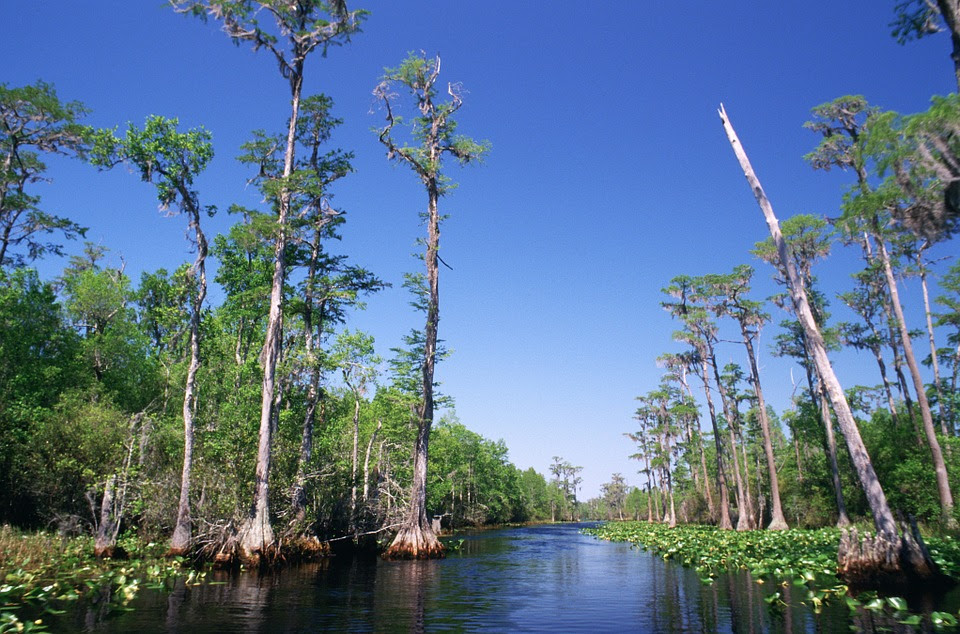A Unique Look at Ecological History
A little over 300 miles away in the swamplands of the South-Atlantic lives a glimpse of ecological history that many of us don't get to enjoy regularly. While our planet has been slowly developing for the better portion of 4.6 billion years, it is difficult to see much of that natural history untouched by humans still existing on the surface of the Earth today. Sometimes we are lucky enough to have a glimpse into this history though, as seen in a specific stand of bald cypress trees encompassing the banks of the Black River in southeastern North Carolina, which are now considered to be some of the oldest trees in the country and the world.
The area which is known to locals as the Three Sisters Swamp is home to several trees, all of which are known to be more than 1,000 years old. If that isn't amazing enough, researchers recently calculated a bald cypress (Taxodium distichum) to be at least 2,624 years old. According to an Environmental Research Communications study, the discovery revealed a particular bald cypress as "the oldest-known tree in the eastern portion of North America, as well as the longest-living known wetland tree species on Earth."
To truly understand just how old this tree is, we can reference previous moments in history, which can help us genuinely picture how long this tree has been around. The Smithsonian Magazine explains that this tree was alive "when Nebuchadnezzar II built the Hanging Gardens in Babylon, when the Normans invaded England, and when Shakespeare first set quill to paper."
The ancient group of cypress, which consists of approximately 50 individuals, was most recently discovered in 2017 by lead author and University of Arkansas scientist, David W. Stahle, and his colleagues. The study they conducted consisted of collecting 110 core samples from various bald cypress trees in the specific region and then calculating their age by counting the annual growth rings and additional radiocarbon dating.
Their extraordinary age is just one reason why these trees are so phenomenal. The stand of cypress trees also helps to see the history of climatic conditions for the region, which are described by Stahle as "amazingly accurate and detailed." The comprehensive record includes the “droughts of 1587–1589 associated with the disappearance of the Lost Colony of Roanoke Island and the drought of 1606–1612 concurrent with the hardships suffered during the early years of the Jamestown Colony, the first successful English settlement in the New World.”
The stand of cypress trees with their impressive maturity, ability to record ancient climatic conditions and the ecological services that they naturally provide are just further reasons of why the protection of this remarkable natural wonder is so imperative. The researchers concluded their study by pronouncing the role that these trees might have in future conservation, acting as a “powerful incentive for private, state, and federal conservation of this remarkable waterway.”
While there is no doubt that this particular stand of bald cypress trees is something special, all of us here at Donegan's Tree Service think that all trees are exceptional in their own way. If you would like to make sure that your tree's stay healthy enough to live for thousands of years to come, make your appointment today to have Donegan's Tree Service tree team evaluate your property!
—Crys Bauer, B.S. in Environmental Studies + Sustainable Resource Management & Donegan’s Tree Service team writer

